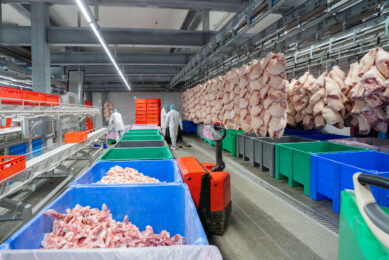PED virus: Clarity is needed

If only we were a 100% sure on how Porcine Epidemic Diarrhoea (PED) virus travels and operates – this would help the pig industry a lot. Not knowing leads to guessing.
My inbox has been pretty full over the last days and weeks with press releases and statements relating products and strategies on being safe and secure. Others claim their products can help manage the negative side effects of PED virus.
Particularly strong were the messages from spray dried porcine plasma producers like APC and Sonac, but also from e.g. the North American Spray Dried Blood and Plasma Producers as well as European Animal Protein Association. They were all keen to show the safety of their products for piglets and support this with long lists of scientific data.
The reason for their emphasis on safety was a statement by the Canadian Food Inspection Agency (CFIA) in February, announcing that testing was being conducted to determine if feed had contributed to the Porcine Epidemic Diarrhoea virus (PEDv) outbreaks. The testing was done as PED virus had been found in samples of US-origin plasma obtained by a third-party manufacturer for animal nutrition company Grand Valley Fortifiers.
A couple of weeks later, however, the CFIA concluded that the bioassay study could not demonstrate that the feed pellets containing PED-infected blood plasma are capable of causing disease in pigs. Pretty much in line with the message of plasma producers who had always said this.
It goes to show that decent and firm knowledge is needed – not only to stop PED virus but also to make things clear. How does it spread? What do we know? Which strategies really do help?
Origins
Where it originated is still a mystery – and it remains to be seen if a cause will ever be found. Sequencing research pointed to Anhui province in China, after a 99.5% similarity between US and Chinese strains had been shown. How the virus crossed over to the US – nobody knows.
Once inside the American continent, spread is more easily explained as the virus travels in faeces. The National Hog Farmer’s analysis even points to one ‘thimble-full of faeces is enough to infect all the pigs in the United States’. On top, the virus is assumed to prefer cold weather, which explains the virus’ spread in North America during the winter months.
And does it mutate further in North America? The virus never stays the same – so much seems certain. Ohio State University researchers demonstrate this May that a new PED virus strain (OH851) is found in Ohio, infecting mainly sows, but piglets showing minimal or no signs. They write that ‘it might have evolved from a recombinant event involving a strain from China’. On the upside, the researchers call the new strain ‘a potential vaccine candidate’.
Other research by Iowa State University, also aiming to sequence PED virus strains, suggests that new strains they found in January are unlikely to be mutants having evolved from PEDv previously identified in the US.
Once inside pigs – what does it do then? A little hint of the virus’ pathogenesis was revealed in a research by researchers from Ohio State University and the Ohio department of agriculture. They stated in early April that the PED virus strain PC21A “is highly enteropathogenic and acutely infects the entire intestine, but the jejunum and ileum are the primary sites of infection. PC21A infection causes severe atrophic enteritis accompanied by viraemia that leads to severe diarrhoea and vomiting.”
Biosecurity
The faeces spreading points to the need of a very firm on-farm biosecurity as a way to keep the virus out. Easier said than done though, if a thimble-full of faeces is enough!
I realise, this is only a small summary of probably far more research having been done. All bits are welcome to unravel the mysteries of the virus called PEDv. Let me hear yours.
Also read:
Where did PED virus occur? Check the online map.











